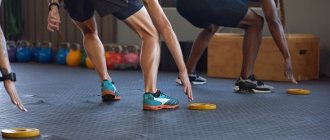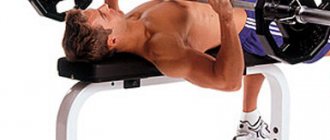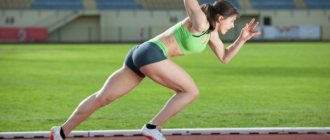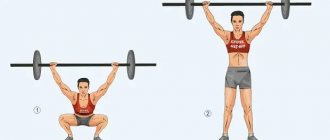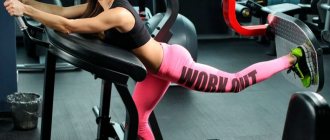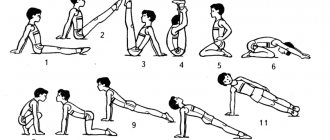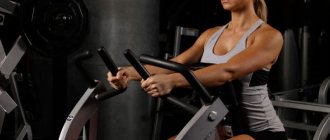Use of this item
Using the high start technique, it is possible to achieve the maximum possible speed over a short distance. In addition to the fact that this type is used in athletics as a separate start, it is also used as an exercise in preparation for a low start.
The last sports technique is used during relay races, short-distance races and sports games in physical education lessons.
At what distances is high start used? According to the competition rules, it is used for two teams at medium and long distances.
Running rules
Running competitions in athletics are held according to certain rules. There are both general rules for all running competitions and separate rules for each type. The basic rules of running include the following points: in short-distance running, each athlete must stay only in his own lane; it is prohibited to cross into the opponent’s lane while running. The start is made when the starter fires; in case of an earlier start (false start), the athlete receives a warning; a repeated warning leads to the athlete’s removal from the competition. The rules for middle and long distance running in athletics determine the participation of athletes in the race on a common track. The exception is the 800-meter run, where participants run the first 100 meters along their own track and only then regroup into the general group. Any physical contact during the course is also prohibited. The panel of judges has the right to disqualify an athlete who has violated these rules.
Types of starts in running
There are two types of starts used in track and field competitions - high and low. High is not always used, but to achieve high sports goals it is necessary to master both one and the other method.
Reference! The correct start is of particular importance during sprint competitions.
Features of initial training
Before you start learning the technique of performing a high start, you can run out of a “falling” position. To do this, the athlete rests on his feet, shoulders in front, without any bending in the hip joints. This position shows the "fall" forward, after which the start begins.
During the initial training period, it is necessary to carry out a detailed analysis of each starting command with an unlimited number of repetitions. The first training sessions from a high start position involve running a 15-20 meter race. Subsequently, the distance increases to 30-40 meters.
Mastering the technique of performing a high start
Before giving commands, the athlete must be at a distance of 1.5-2 m from the start line. When commanding “Go to the start”, the athlete places the starting leg forward with the foot, while the toe is placed directly in front of the starting line.
The other leg, which is the fly leg, moves half a step back, resting on the front half of the foot. The feet are placed so that they are parallel to each other along the trajectory of movement. The start is carried out in a relaxed state of the muscles.
With the “Attention” command, the athlete transfers his body weight to the other leg, his legs bend at the knees, his torso goes forward, his arms bend at the elbows, and the arm opposite the pushing leg is brought forward. Or the bent arm can be lowered down while in a bent position.
Start of movement
After the “March” command, the athletes start. In this case, the basic leg used in running is the fly leg, which is bent at the knee. The high start technique involves starting the movement with an active movement with an emphasis on the swing leg.
The first steps are performed by placing the feet elastically under the body, while the starting inclination is not lost. This helps the athlete gain the maximum possible speed.
Subsequently, the body straightens and the step length increases. When the distance exceeds 400 m, the “Attention” command is not given, but when teaching the high start technique, you need to alternate the use of three and two commands.
When running at a distance of 800 m, which involves running the first 100 m along your own track, there is a starting acceleration, which goes on a path of 15-20 m, and active running, which goes on until the moment when the athlete runs out onto the common track. Active running is characterized by a higher speed compared to running on a common track, where the speed is evened out.
A high start in athletics can be done using a support or without using it.
How to train?
In achieving results in sprint running, the quality of execution of technical elements is of great importance. However, even high precision movements do not provide good results. Therefore, when training sprinters, much attention is paid to physical fitness.
An athlete's maximum speed depends on the length and frequency of the stride. The optimal period for increasing step frequency is between 10 and 14 years of age. However, the frequency can develop after 14 years until reaching adulthood.
A popular exercise for increasing cadence is high-knee running. The idea is to perform 3-5 approaches with a time limit of 20-30 seconds. In a period of 30 seconds, it is necessary to perform the maximum number of movements, but not to violate the technique of the exercise.
Regular stretching after the main workout allows you to develop step length. It is also worth paying attention to the stride length when covering the sprint distance itself.
Starting run
It has two parts: rolling and power. In the first type of takeoff, the main work is done by the foot and knee. The legs follow the “falling” body. The foot and knee extensors push the body forward. After the push-off occurs, the leg is picked up by the thigh, which helps the foot to come to the track at the same time as the pelvis. The advantages of this type are that starting requires a minimum of effort, resulting in an increase in step frequency.
But when sprinting over short distances, the hip does not come forward, especially in beginner athletes, and effective pushing is not possible.
With the power type of run-up, the main work is done by the back of the thigh and foot. The foot is placed on a support in front of the center of mass. When running, the muscles of the back of the thigh immediately turn on. In this case, the body is still supported in an inclined position. This type provides a powerful take-off and a good transition to running over a given distance. But at the same time, there is a high probability of damaging the muscles of the back of the thigh. This type involves powerful charging of the spring at the start with different hand placements. Mainly suitable for short distances.
The rolling-out type of run-up can be used for long sprints and works better with a narrow arm spacing.
What to do
Athletes commit most incorrect actions when the “March” command sounds. The main one is to almost immediately straighten your torso to a vertical position. The step with the swing leg is weak and too small. This immediately leads to a significant loss of starting speed. You can correct the situation by starting with keeping your body in an inclined position.
During training, it makes sense to limit the process of straightening the body using additional means. The latter can be an inclined bar or a rubber band stretched over the track.
If the leg muscles (mainly the thigh muscles - its front surface) of athletes are not yet sufficiently developed, you can practice using small jumps from a squat or half-squat position.
Another common mistake is taking too much of a first step with the swing leg, which automatically causes a short stop and loss of speed in the subsequent step. It is advisable to perform the first step more actively, placing your foot under you. During the training process, it makes sense to put painted marks on the track for the initial steps.
Basic mistakes when issuing the “Start” command
The forward bend is greater than necessary, which pushes the shoulders beyond the starting line. This error makes it possible to leave the start line even before the “March” command. At the same time, the load on the pushing leg increases due to the fact that it holds the torso. In this regard, with the “March” command, the athlete spends extra effort on being able to start the race.
The knees are bent more than necessary. This error leads to the fact that the athlete will need to make extra efforts to get a quick start. In this case, there is an overexpenditure of effort and loss of time at the very beginning.
The shoulders may be tilted back or the torso may not be tilted but supported upright. This error leads to the fact that the first steps will be quite short due to the fact that the movement is directed upward, and not forward. The maximum possible speed of movement is achieved with a delay from other athletes.
Preparing to run different distances
Long-distance running requires the athlete to have maximum endurance and the ability to correctly distribute their strength throughout the entire distance. Long-distance running puts a lot of stress on the cardiovascular system, which is why it is necessary to correctly calculate the speed of movement and observe the correct running technique.
An athlete's training before long-distance races includes many exercises that help develop speed and endurance. You can develop special endurance through interval training, alternating different frequencies and tempos of loads.
To practice running short distances, you will need to focus all your efforts on improving the muscular qualities of the lower extremities. A good help in preparing for short, fast races is hurdling or running on rough terrain - on sand, uphill and on soft ground, as well as in rainy weather.
One of the most extreme types of athletics is sprinting. An athlete needs to give 100% in short periods of time and over a short distance, to localize all his body reserves - this is the only way to achieve high results. A sprint race requires the highest concentration of attention, excellent coordination of movements and maximum composure of the athlete. It is possible to successfully run a sprint only after many years of grueling training, so beginner athletes are not recommended to engage in this type of athletics.
Basic mistakes when issuing the “March” command
The swing leg lifts too high during the first step. This mistake causes the first step to be short, which will slow down progress.
The head rises up too quickly and abruptly. As a result of this error, the body abruptly moves to a vertical position. The first steps are very short. The movement is mostly directed not forward, but upward.
The arms are raised too high, the shoulders are too tense. The arms are overextended and transfer part of the tension to the legs, running movements become convulsive, which leads to unnecessary expenditure of energy and strength at the beginning of acceleration.
Remember your feet
When working on this point, special attention should be paid to the correct placement of both legs. It would also be incorrect for the athlete to move his chin back during the first step. This leads to disruption of the running rhythm and general coordination at the beginning of the movement, during which a rapid increase in speed is impossible. The chin turns up, which inevitably leads to the body straightening too quickly. It is also necessary to control this moment - monitor the work of the chin, which should be lowered and pressed to the chest.
If the hips rise too high on the first step, then the step will be too short and will immediately deprive the participant of the advantage. Therefore, the foot should be positioned low in relation to the running surface.
Fixing errors in the “Start” command
We present the corrections of errors in the order they were written in the previous sections of the article.
We correct the first mistake by straightening the body and slightly raising the head.
To correct the following error, you also need to raise your head, in addition to this, you need to slightly straighten the bend of your legs and raise your arms.
To correct the third mistake, tilt your shoulders forward a little and lower your chin. We focus our gaze on a point located at a length of 3-5 m from the starting line.
Exercises for teaching the described technique
Learning the high start technique involves performing a number of exercises.
First, you need to learn how to take the starting position when voicing the commands “To start” and “Attention” under the guidance of a coach.
The next exercise involves doing the first exercise yourself.
Continuation of training is that the beginning athlete should be inclined, the torso is parallel to the platform, the emphasis is placed on the wall 1 m +/-20 cm from it. The knee touches the strongly bent leg to the chest. The legs alternate as the workout progresses.
The fourth exercise is performed in a high start position. In this case, an imitation of moving the swing leg forward is carried out. When performing this exercise, hand movements are also developed.
The fifth exercise involves taking a position, standing on your toes, from which a “fall” occurs. When you completely lose your balance, you need to take a quick step and move your hip forward and up, accompanying all this with active movements of your arms.
The sixth exercise is the final one. It is carried out together with a partner, who must provide resistance, and the athlete must overcome it. The run is carried out at a distance of 10-15 m. The athlete must take a position leaning forward, while resting his unbent arms on the shoulder of a moderately resisting partner.
Rules for the race
How is a high start performed? We have already found out that mainly high starts are used in long and medium distance races. After the signal to start the race, participants immediately take a high start position, without moving or touching the starting line or stepping beyond it.
The lanes along which athletes will run are allocated in advance by drawing lots, and athletes should not change lanes or occupy other people's lanes. During the general start, places along the starting line are distributed according to the protocol.
If the athlete begins to move before the command “March” is sounded, or even tears off a limb or loses balance, he is counted as a false start. It is also counted if previous commands are not completed within a reasonable time. The athlete receives a warning and confirms acceptance by raising his hand. If the number of false starts exceeds one, the athlete is removed from the competition.

